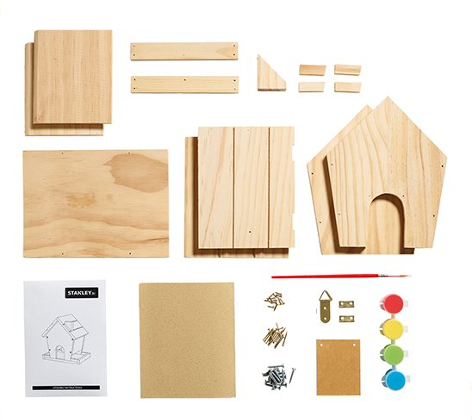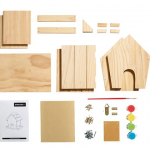Monday to Friday: 7AM - 7PM
Weekend: 10AM - 5PM
Woodworking With Kids

Introduction
As a new tradition in for kids, Kinder educational toys and games would like to be partner in contributing in woodworking project. As part of our social corporate responsibility, we are delighted to plan and deliver effectively woodworking training for children based on our schedule at a center or different schools.
Objective
Easy Woodworking Projects for Kids to make and create are the best activity to keep little hands busy and hearts full of joy.
- To introduce children to woodworking,
- To empower them through creating their own projects.
Procedures in woodworking with kids
Children can be taught to utilize the woodworking area appropriately and learn to respect tools – just as in any other area in the classroom. For children ages 4 years and older, the benefits and the learning associated with this activity far outweigh the potential for problems, if implemented and supervised correctly.
- Start slowly! Implementing woodworking in our classroom does not mean starting out with a full set of Craftsman tools and power-saw. We will start simple – a piece of sandpaper and wood; From there, we will introduce a piece of wood with several screws started and a screwdriver. Introduce one tool and one skill at a time.
- Incorporate a learning unit on wood, and uses for wood. Have children explore wood – note the grain, the smell, the textures, the weight, differences in types, etc.
- Teach the children how to use real tools correctly. We will cover the rules for the Woodworking Area, and we will make it clear that if children choose not to follow the safety rules they will need to leave that area and play somewhere else. Safety is always our first and foremost! This concept can be taught, as can a healthy respect for tools.
- Limit the number at the workbench to one or two.
- Children (ages 4 and up) should be using real tools. (The plastic Little Tykes workbench is appropriate for children 3 and under.)
- Expect and model respect for the tools and the woodworking area. Learn and teach the children the correct names of all of the tools. We will trace the outline of the tools on the pegboard for children to put the tools back when they are finished with them. Goggles should always be worn. (Hard hats and construction aprons can also be used.)
- We will place our workbench in a highly visible area, but away from traffic paths. We may also want to locate the workbench away from the block area so that wooden blocks are not used as wood scraps.
- If, at some point we incorporate a saw, we will have a vise permanently attached to the workbench to hold the wood in place when sawing.
- The best types of wood we use are soft wood –pine wood
- Use nails with large heads (roofer nails). We don’t use nails that are longer than the wood, to prevent a nail sticking out of the bottom of a “creation”.
- We will place construction pictures and related magazines in this area to foster ideas, creativity, and language development.
- If we foresee a problem, we will remove the tools from the workbench and bring them out only during the times when that area is open. We can also use string to tie the tools to the workbench (this really only serves as a reminder – the determined child will cut the string with the saw.)
- We can start the nails for children. We can also place a comb between the nail head and the child’s fingers as a barrier to prevent injury.
- Safety is paramount!!! The Woodworking Area must be well supervised at all times!
Outcomes of Wood working at Early Age
Woodworking with kids train kids about the importance of doing real, hands-on activities in school and at home that enable students to:
- Think things through for themselves
- Develop skill, originality and inventiveness
- Explore their own self-interests
- Plan, organize and execute meaningful work
- Prepare to profitably employ leisure time
- Be handy and resourceful
- Develop both character and intellect
- Create useful beauty to benefit family, community and self
Benefits of Woodwork in early years:
- Develops children’s sense of agency- that ‘can-do’ spirit
- Encourages persistence
- Develops hand-eye coordination, fine and gross motor skills
- Encourages perseverance with challenging tasks
- Builds self-esteem
- Builds on children’s ability to self-regulate
- Provides numerous opportunities for problem solving
- Allows children the opportunity to play – tinkering, exploring the possibilities of wood and tools
- Allows children to express their imagination in a new medium
- Draws in children’s curiosity-engaging children
- Encourages extended periods of focus and concentration
- Develops critical thinking, analysing, synthesising

